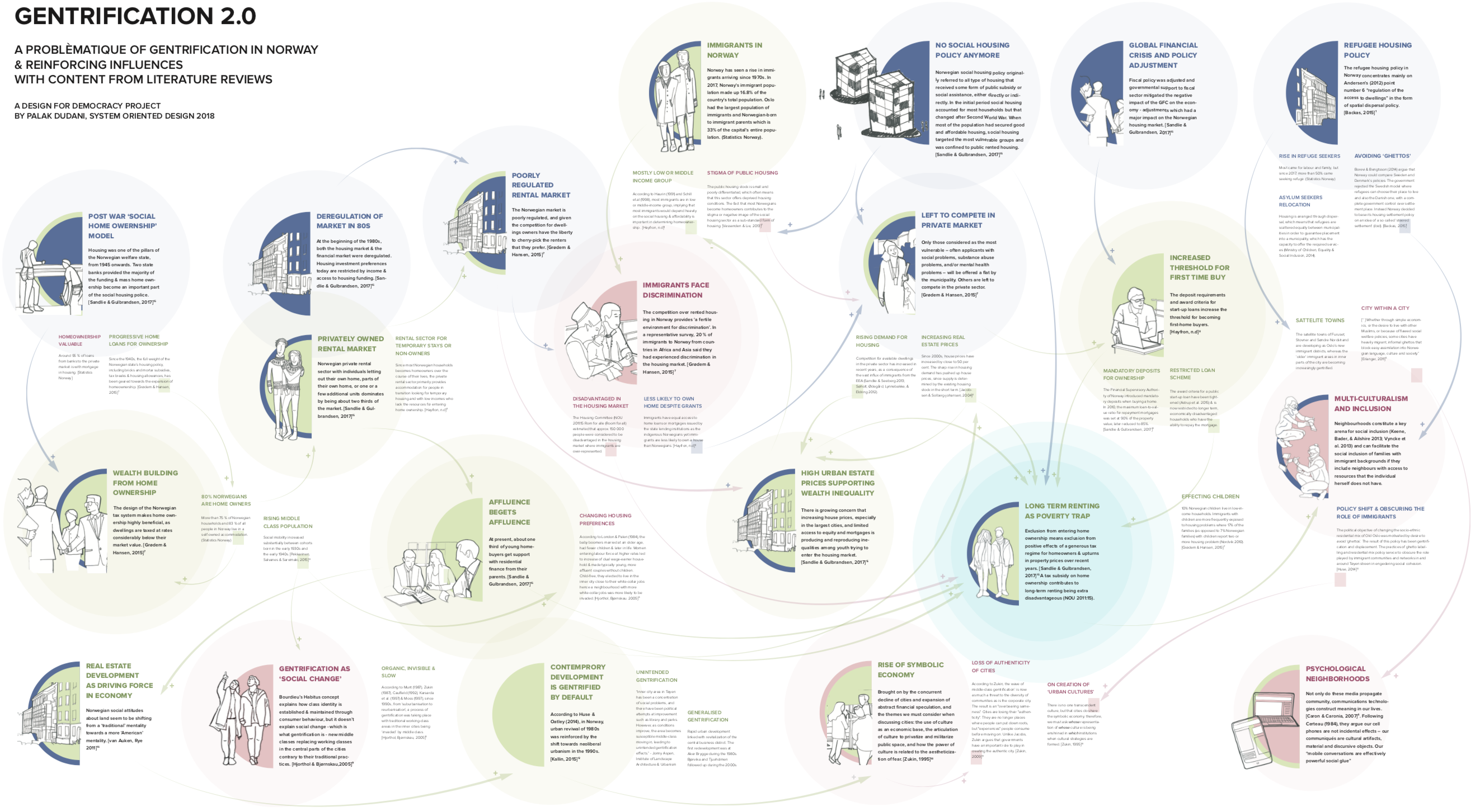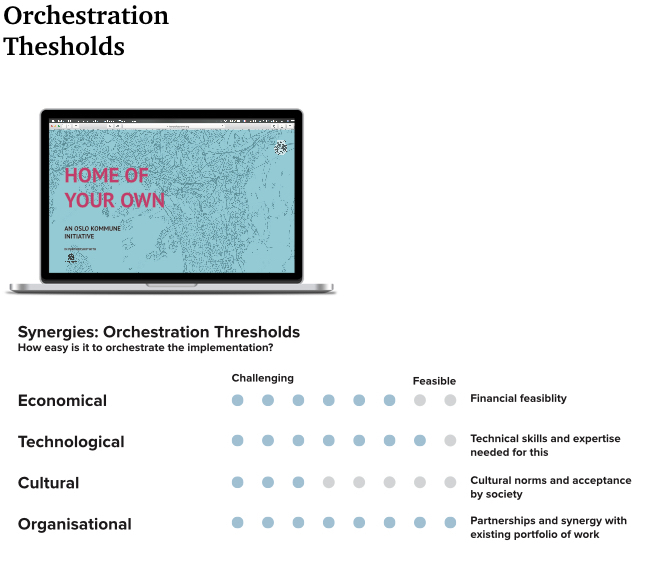Gentrification 2.0
Bridging the Homeownership Gap between Citizens: A Design for Democracy Project

Duration
12 weeks
Capacity
Self-directed project
Supervisors
Prof Birger Sevaldson
Andreas Wettre
Keywords
Systems Thinking
Gigamapping
Research
Service Design
12 weeks
Capacity
Self-directed project
Supervisors
Prof Birger Sevaldson
Andreas Wettre
Keywords
Systems Thinking
Gigamapping
Research
Service Design
Despite progressive egalitarian policies, systems can have inherent power dynamics that gravitate towards systemic inequities.
This is a semester studio project for the course systems oriented design (SOD). Primarily a research project, it uses SOD methodologies and processes to arrive at insights which are then addressed by design responses. In this project, I propose a discursive design response in order to create discussion and debate around current systemic inequities in the housing market. Project Documentation ︎
This work was presented at the 8th Relating Systems Thinking and Design Symposium, IIT Chicago, October 2019.
Systems dynamics of gentrification, my presentation at IIT Chicago. 2019 ︎ Link





Click to see high definition
This study finds patterns of disparity arise in terms of access and agency between two schematic groups, native Norwegians and immigrants,
where inequities are then transferred over generations, with long term impact suggesting a poverty trap across ethnic lines.

Process
1/The City and Urban living
2/ Mapping and Explorations
3/ Gentrification in Norwegian Context
4/ The System and Leverage points
5/ Design response
6/ Systemic Effects

1/
The City and Urban Living
“ Right to the city is far more than the individual liberty to access urban resources: It is a right to change ourselves by changing the city..the freedom to make and remake our cities. “



Oslo is being rebuilt around something city-dwellers don’t know they’ve lost: “slow space”.
2/
Mapping and explorations
“The rich design research space is based on multiple uses of media representationa, and it includes the physical space, the social space and digital space in which the design process and its research compenent takes place. “
- Birger Sevaldson
- Birger Sevaldson

Rich design space
Prof Jonny Aspen, Urbanist (AHO)![]()

3/
Gentrification in Norwegian Context
Given the social democratic framework of Norway with a robust housing market and welfare system in place, gentrification in Norway is unique in it’s characteristics and behaviour.

13 caught in police action against squatters in Hauskvartalet, Norway Today
4/
A problèmatique is a network of problems which aims to give a holistic picture of the factors in play. We begin with posing the problem of research (‘ What is gentrification in Norwegian context?) to bring out the relevant information (terms) and to be in the right spatio-temporal frame.
Systems Dynamic Map
A problèmatique is a network of problems which aims to give a holistic picture of the factors in play. We begin with posing the problem of research (‘ What is gentrification in Norwegian context?) to bring out the relevant information (terms) and to be in the right spatio-temporal frame.
Developing the problematique: From interview points to the final map
![]()

 The final map
The final mapLeverage Points
“places within a complex system (an economy, a city, an ecosystem) where a small shift in one thing can produce big changes in everything.”
Donella Meadows

5/
Housing lottery for working immigrants
A premium service by Oslo Kommune in collaboration with Husbanken
Discursive Design Response: Home of your Own
Housing lottery for working immigrants
A premium service by Oslo Kommune in collaboration with Husbanken

Owned by Oslo Kommune

Service journey (front end and back end)
6/
Systemic Impact
According to Donella Meadows, the best way to address the positive loop is to have another force which reduces that positive gain. Here, I propose that this service would act as a counter forces against the many positive forces leading towards ‘Long term renting as poverty gap’.
The introduction of the service will have some systemic effects. The lines in purple depict the change in influences that I anticipate


Throughout the service, I have identified partnerships and motivations at each step, which makes the lottery service very feasible for implementation. However, the only barrier is cultural acceptance which is also the intention of this project.
Photo credits in this series: The Guardian, QZ.com,
norwaytoday.info, ostkantliv.blogspot.co,
schwarzplan.eu.
